Anticholinergic agents
| Home | | Medicinal Chemistry |Chapter: Medicinal Chemistry : Antiparkinsonism Agents
Antiparkinsonism Agents : Anticholinergic agents - Synthesis and Drug Profile - a. Trihexyphenidyl HCl (Triphen, Parkin, Pacitane) b. Biperiden HCl (Akineton hydrochloride) c. Procyclidine HCl (Kemadrin, Picidin, Prodine) d. Ethopropazine HCl (Parsidol) - Structure, Properties, uses, Synthesis, Assay, Storage, Dosage forms, Dose | Synthesis and Drug Profile
SYNTHESIS AND DRUG PROFILE
Anticholinergic agents
a. Trihexyphenidyl HCl (Triphen, Parkin, Pacitane)
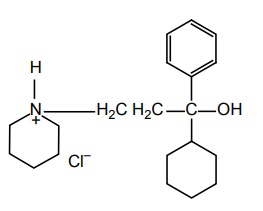
Synthesis
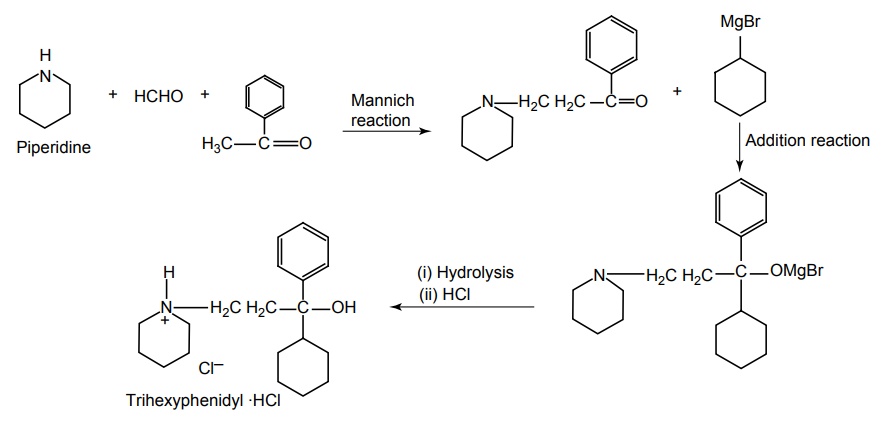
Properties and uses: It is a white crystalline powder, slightly soluble in water, sparingly soluble in alcohol, and methylene chloride. This drug introduced in 1958, has ganglion-blocking activity, its peripheral atropine-like activity predominates. Its therapeutic activity is based on the later activity. It is more effective than levodopa against Parkinson’s tremor.
Assay: Dissolve the sample in alcohol and add 0.01 M hydrochloric acid. Perform potentiometric titration using 0.1 M sodium hydroxide.
Dose: The initial oral dose is 1 mg on first day, followed by 2 mg daily after 3 to 5 days; maintenance dose is 6 to 10 mg/day in 3 to 4 divided doses but not exceeding 20 mg/day.
Dosage forms: Trihexyphenidyl tablets B.P.
b. Biperiden HCl (Akineton hydrochloride)
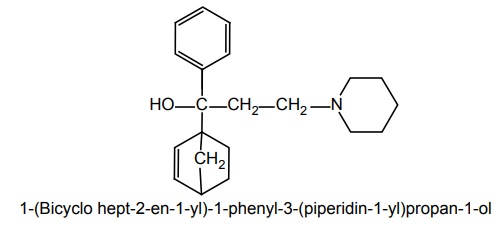
Synthesis
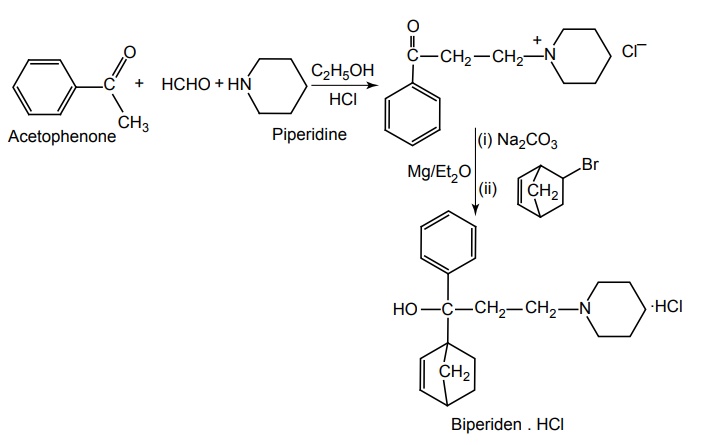
Properties and uses: It is a white crystalline powder, very slightly soluble in methylene chloride, slightly soluble in water, and in alcohol. It reduces tremor, akinesia, and muscle rigidity, drooling and sweating.
Dose: In the treatment of parkinsonism, 2 mg for 3 or 4 times/day.
Assay: Dissolve the sample in alcohol and titrate with 0.1 M alcoholic potassium hydroxide. Determine the end point potentiometrically.
Storage: It should be stored in well-closed airtight containers and protected from light.
c. Procyclidine HCl (Kemadrin, Picidin, Prodine)
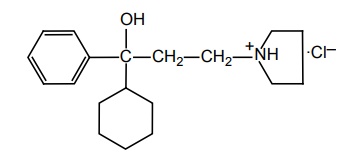
Dose: The initial oral dose is 7.5 mg/day in 3 or 4 divided doses after meals; maintenance dose is usually 20 to 30 mg/day.
Synthesis and drug profile is discussed under ‘Anticholinergic Drugs’ in sec III.
d. Ethopropazine HCl (Parsidol)
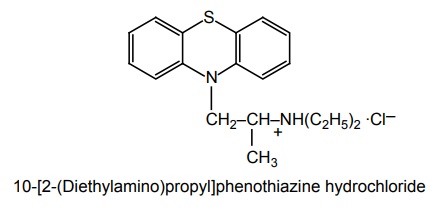
Synthesis
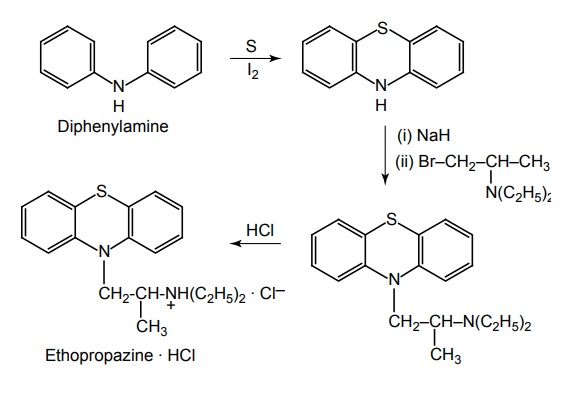
Mode of action: These drugs act by reducing the unbalanced cholinergic activity in the striatum of parkinsonian patients.
Properties and uses: Drowsiness is common and the drug can cause muscle cramps and hypertension. Used especially for control of rigidity. It is an useful adjunct to antiparkinson’s agents.
Dose: The usual oral dose is initially 50 mg/day, slowly increased to 500 mg/day in divided doses.
Related Topics
